Railroad Ink is a roll-and-write game in which you draw highway and railway routes on your player board each round to create Networks connected to Exit points.
Continue reading our Railroad Ink review to learn more about the game and the difference between the Deep Blue and Blazing Red editions. You can also check out our Railroad Ink Expansion Pack Review.
Contents
Railroad Ink Overview
Railroad Ink is a roll-and-write game for 1 to 6 players; each round, the 4 Route dice are rolled, and players write the results on their personal player board.
The goal is to score the most points by connecting as many Exits as possible to a single Network using highway and railway routes.
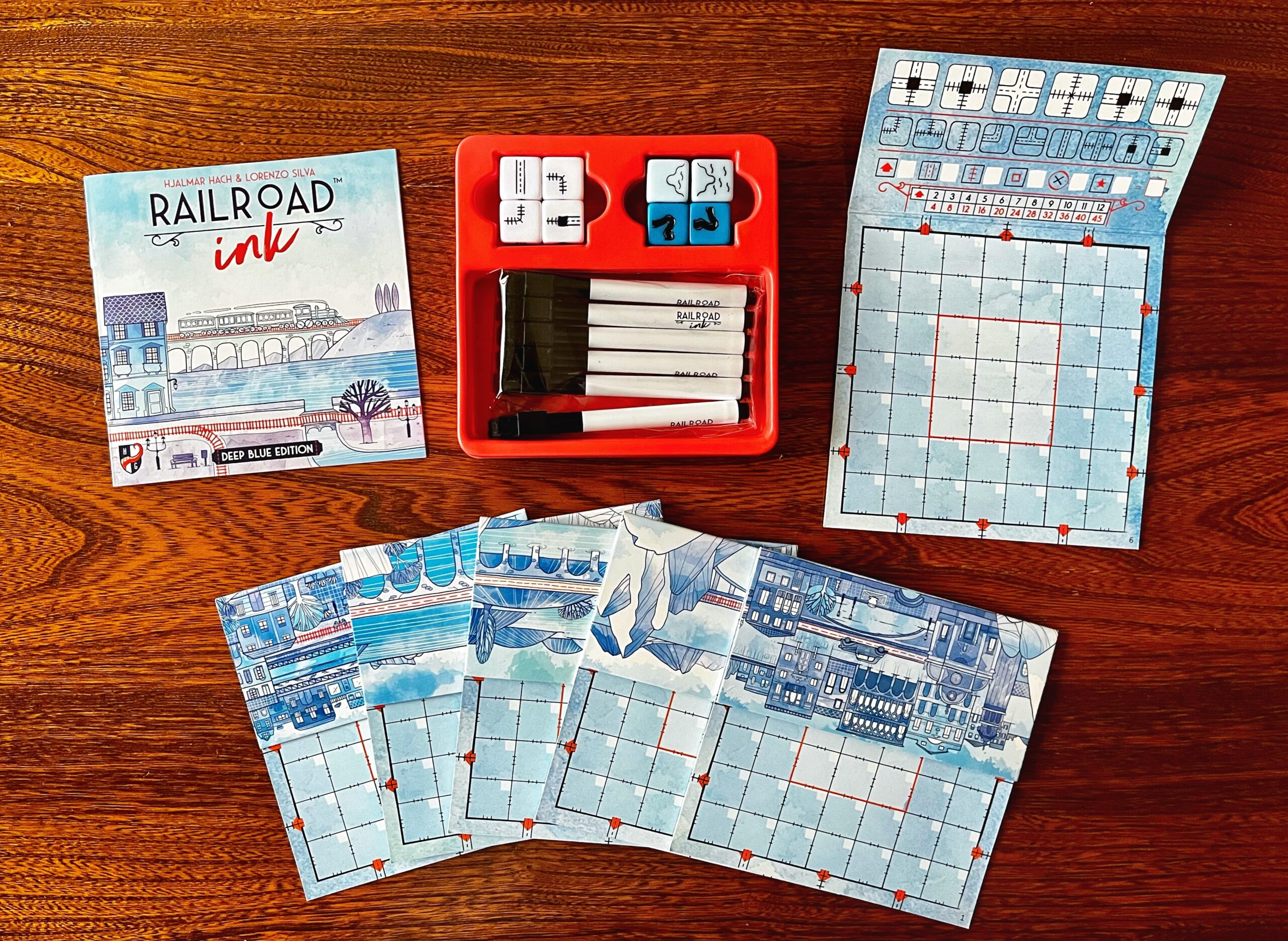
The components in Railroad Ink: Deep Blue Edition.
The basic gameplay for Railroad Ink is the same in the Deep Blue and Blazing Red editions. The difference between them comes down to the 2 expansions included in each.
How To Play Railroad Ink
The setup for Railroad Ink is simple: each player takes a player board and a marker, then the 4 white Route dice are placed within reach.
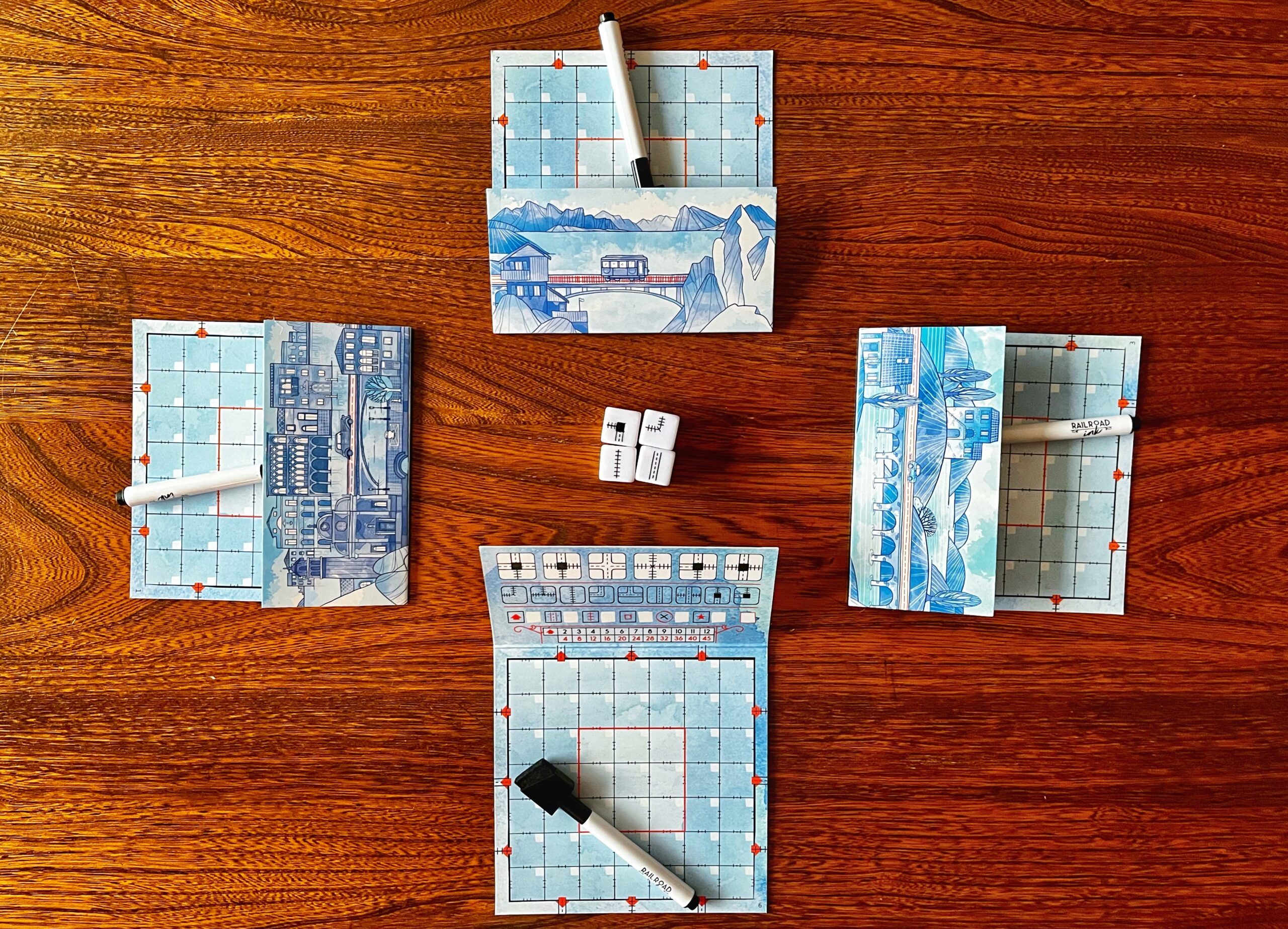
A game of Railroad Ink set up for 4 players.
Railroad Ink is played over 7 rounds. Each round, the 4 Route dice are rolled. Then, players simultaneously draw the dice results on their board.
Route Dice
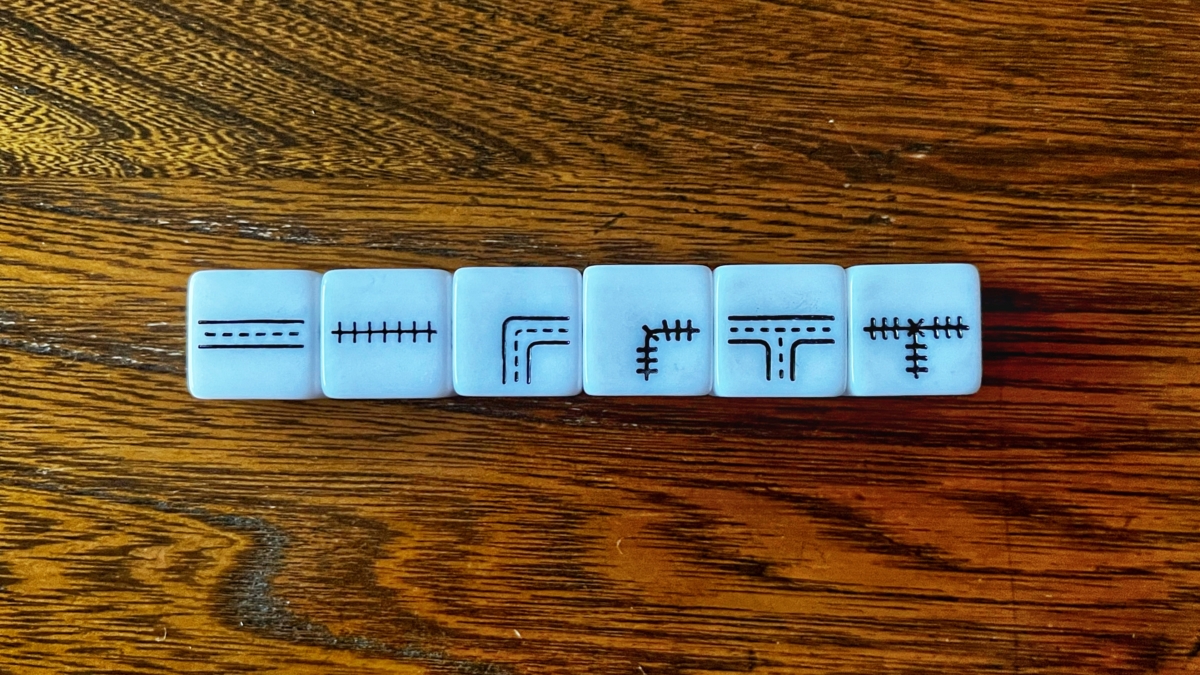
Here are the types of Routes found on 3 dice.
The Routes fall into two categories — highway and railway — that mustn’t connect directly to each other. Imagine if the road you were driving on suddenly turned into train tracks!
However, one of the Route dice features both a highway and a railway on every face. The straight and curved station Routes connect via a station (black square at its center).
The “overpass” face doesn’t actually connect the two Routes; instead, the railway travels underneath the highway.
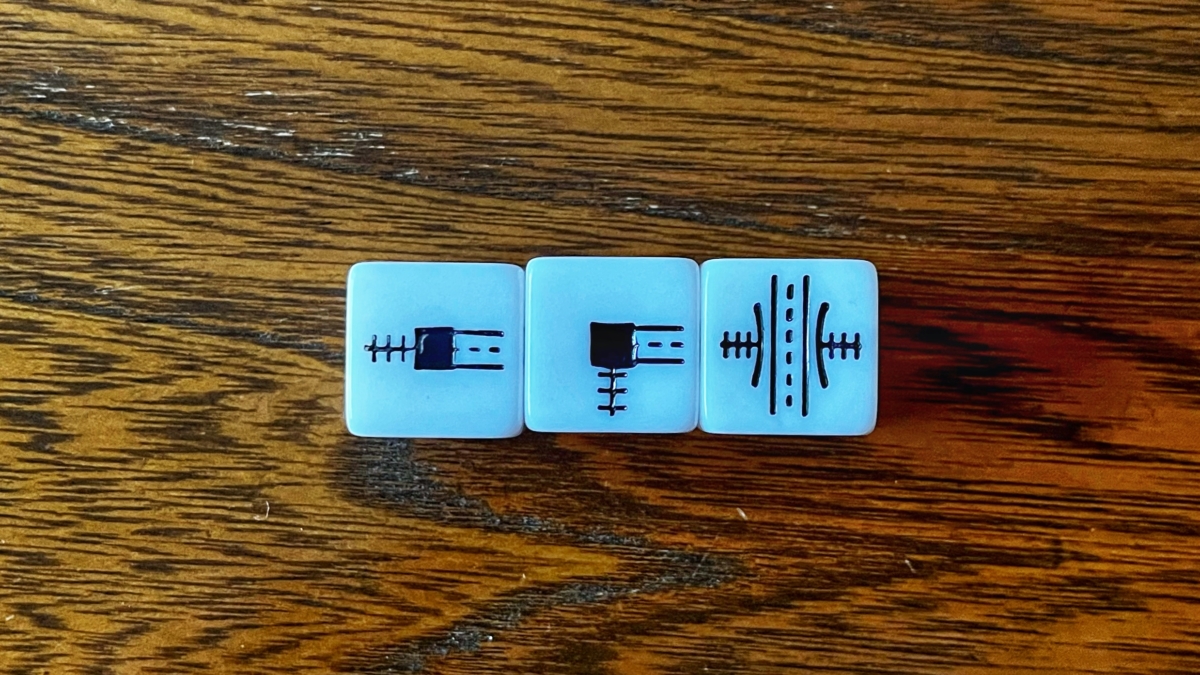
The straight station, the curved station, and the overpass found on the fourth Route die.
Drawing Routes
When you’re drawing the Route dice results on your board, there are a few rules to follow:
- You must draw all 4 Routes shown on each of the dice.
- The Route must connect to an Exit or an already-drawn Route by at least one side.
- You may rotate or flip the Route.
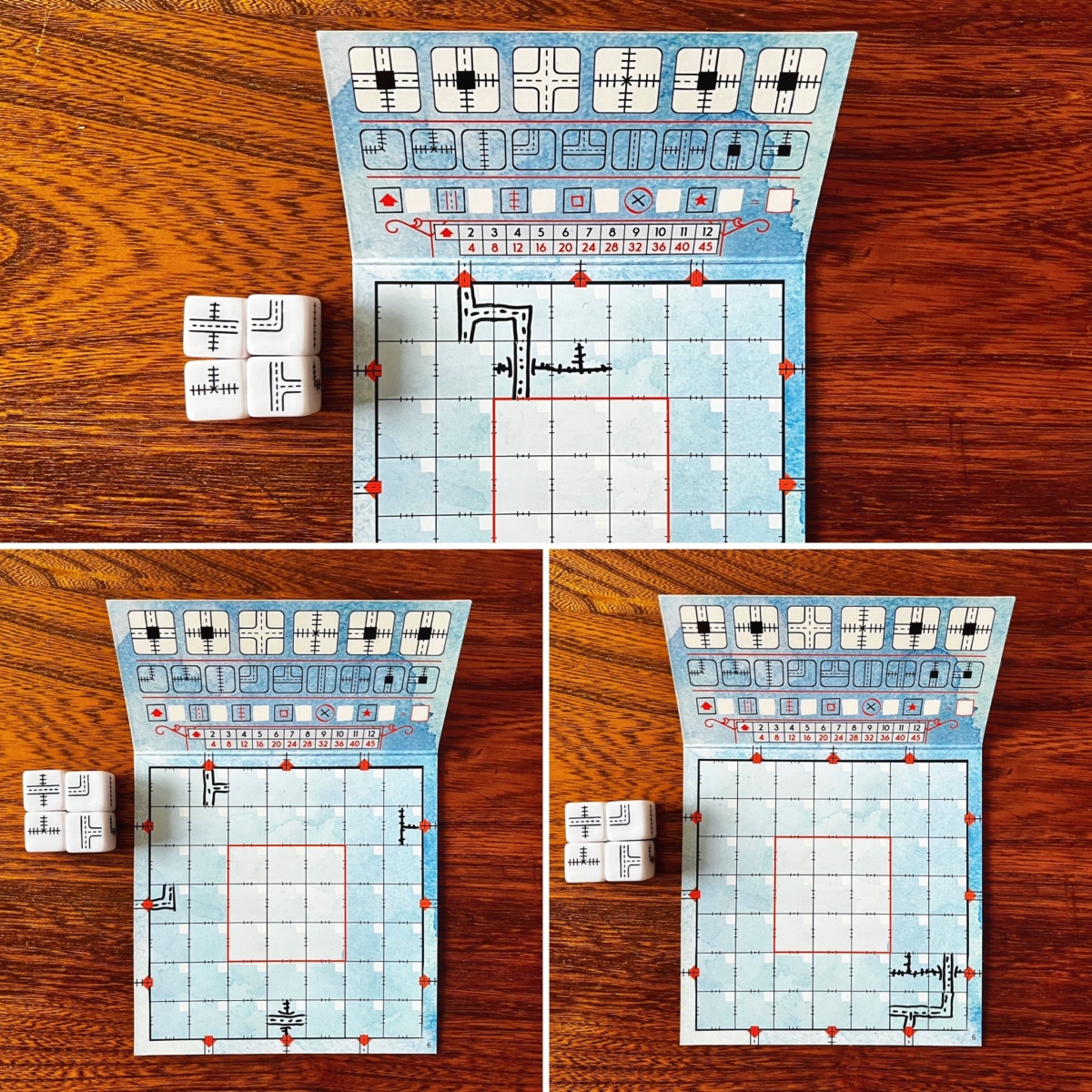
Special Routes
At the top of each player board are 6 Special Routes; these Routes have various configurations of highways and railways that are not found on the Route dice.

The 6 Special Routes.
Following the usual Route drawing rules, you may draw 1 Special Route on your board — in addition to the 4 Route dice results.
There are, however, some limitations:
- You may only draw 1 Special Route per round.
- You may use a Special Route only once per game. (After you’ve used it, cross it out on your board.)
- You may only use 3 Special Routes the entire game.
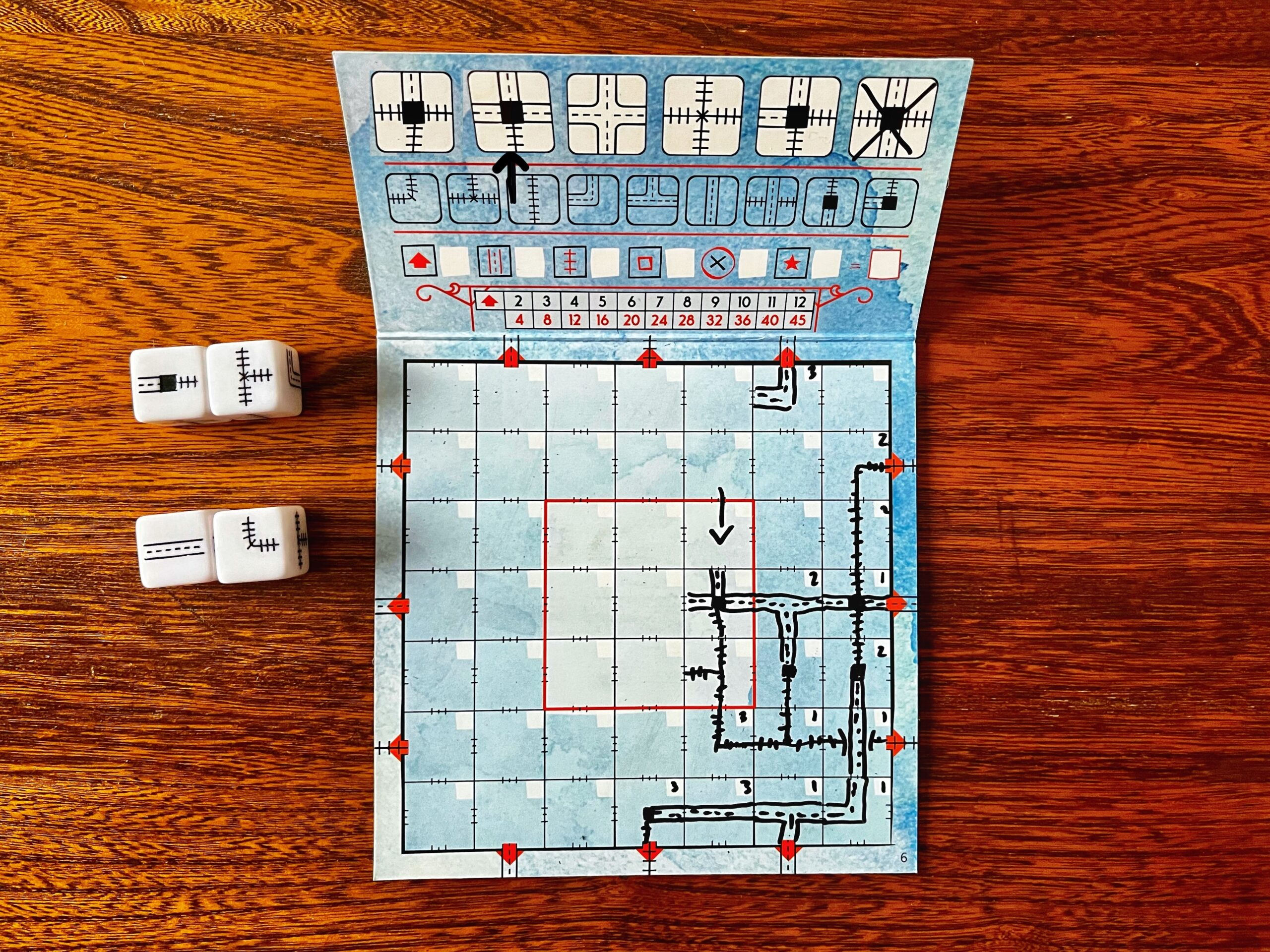
This player has used their second Special Route (as indicated by the arrows). They can’t draw another Special Route this round and only have 1 more available for the rest of the game.
End of Round
After everyone has drawn the 4 Route dice, players write the round number in the white boxes of each space where they drew Routes. This helps keep track of the rounds played and minimizes confusion about what Route was drawn when.
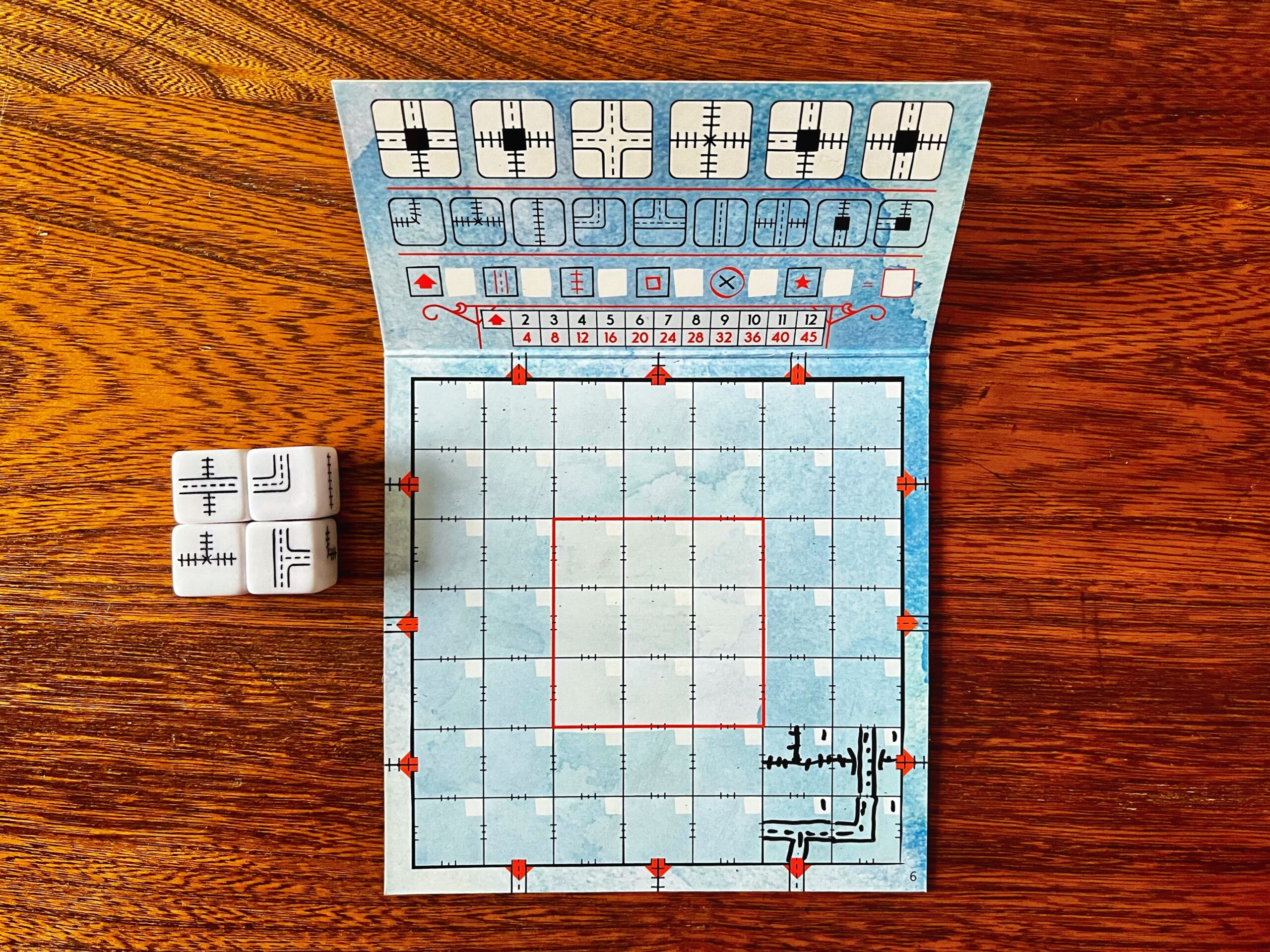
This player draws a “1” in each of their 4 Route spaces for the round.
End-game Scoring
After 7 rounds, each player scores their Routes. You can use the scoring table at the top of your player board as a reference and to keep track of your points.
Networks and Exits
Your Networks and Exits are typically where the bulk of your points come from in Railroad Ink.
A ‘Network’ is Routes connected to each other directly or through a station. For each Exit connected to a Network, you score points according to the table on your board. You’ll score each of your Networks in this way.
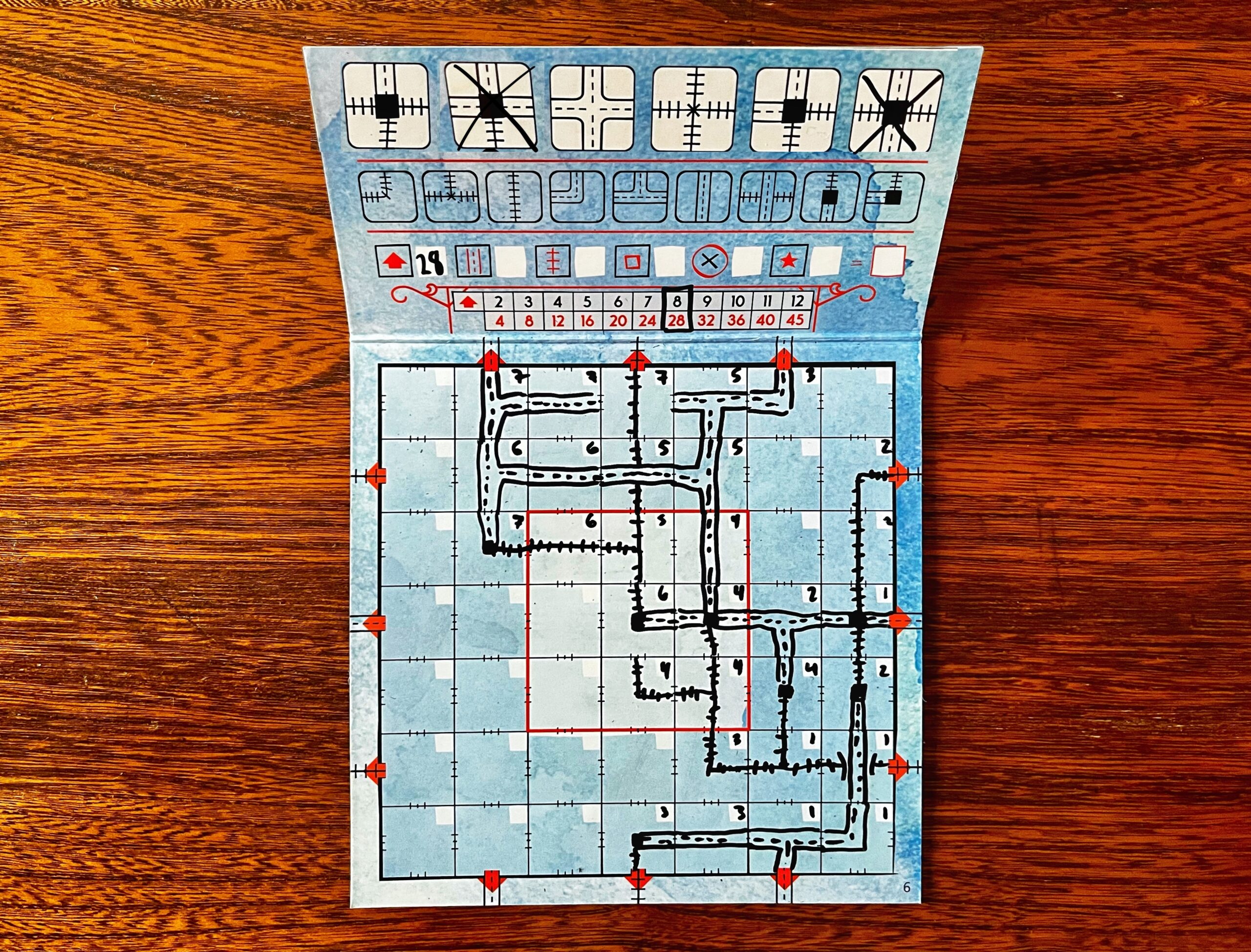
All 8 Exits are connected to a single Network, so this player scores 28 points.
Longest Highway and Railway
Additionally, you’ll score points for your single longest highway and railway. Your longest highway, for example, consists of your longest unbroken Network of adjacent spaces with a highway Route. For each space, you score 1 point.
You score points in the same way for your longest railway.
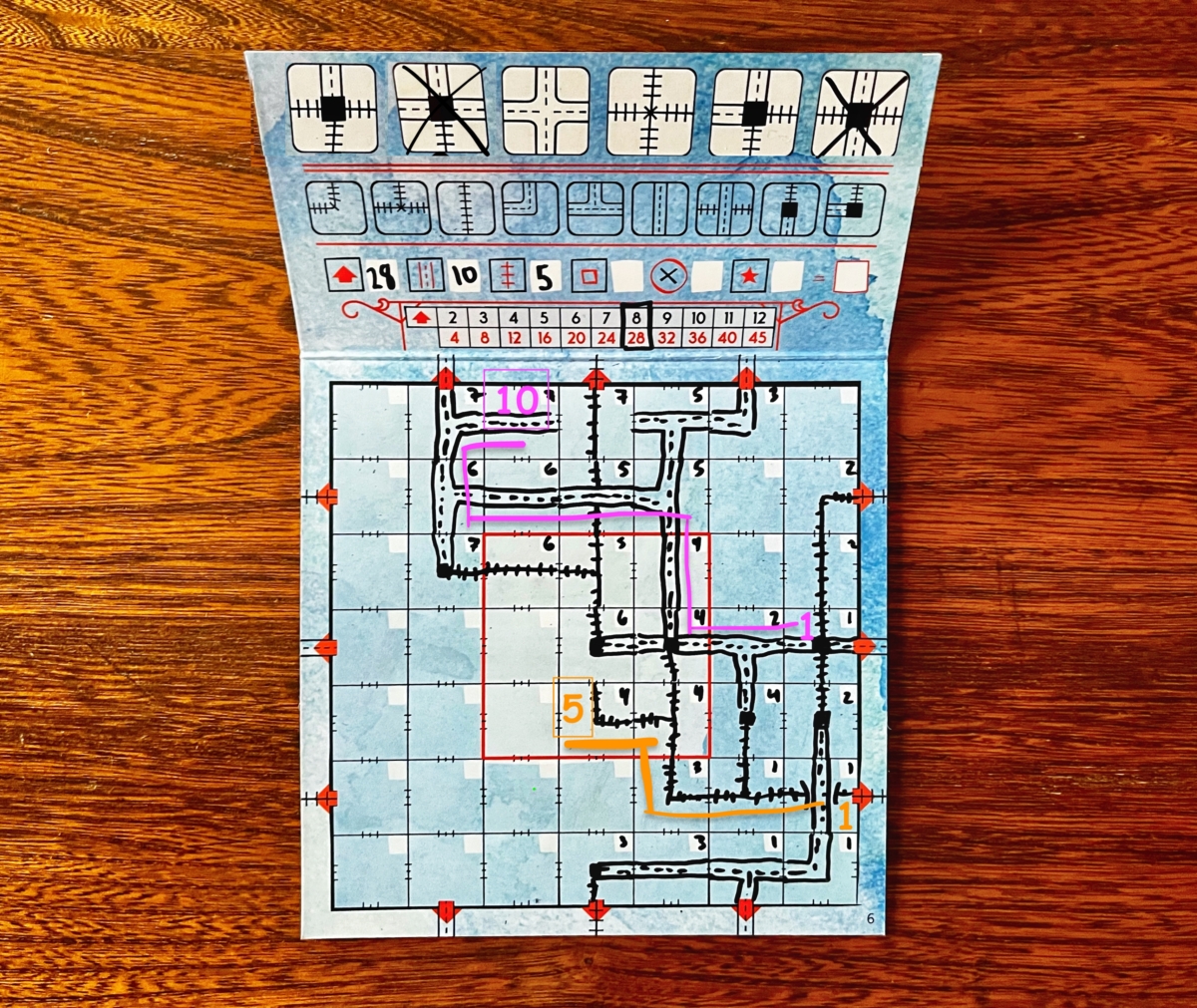
This person would score 10 points for their longest highway (in purple) and 5 points for their longest railway (in orange).
Central Spaces
Furthermore, you score 1 point for each of the 9 central spaces you’ve drawn in.
Errors
Lastly, you lose points for errors; for each Route that isn’t connected to another Route or an outer edge, you lose 1 point. Mark this on your player board with an “X.”
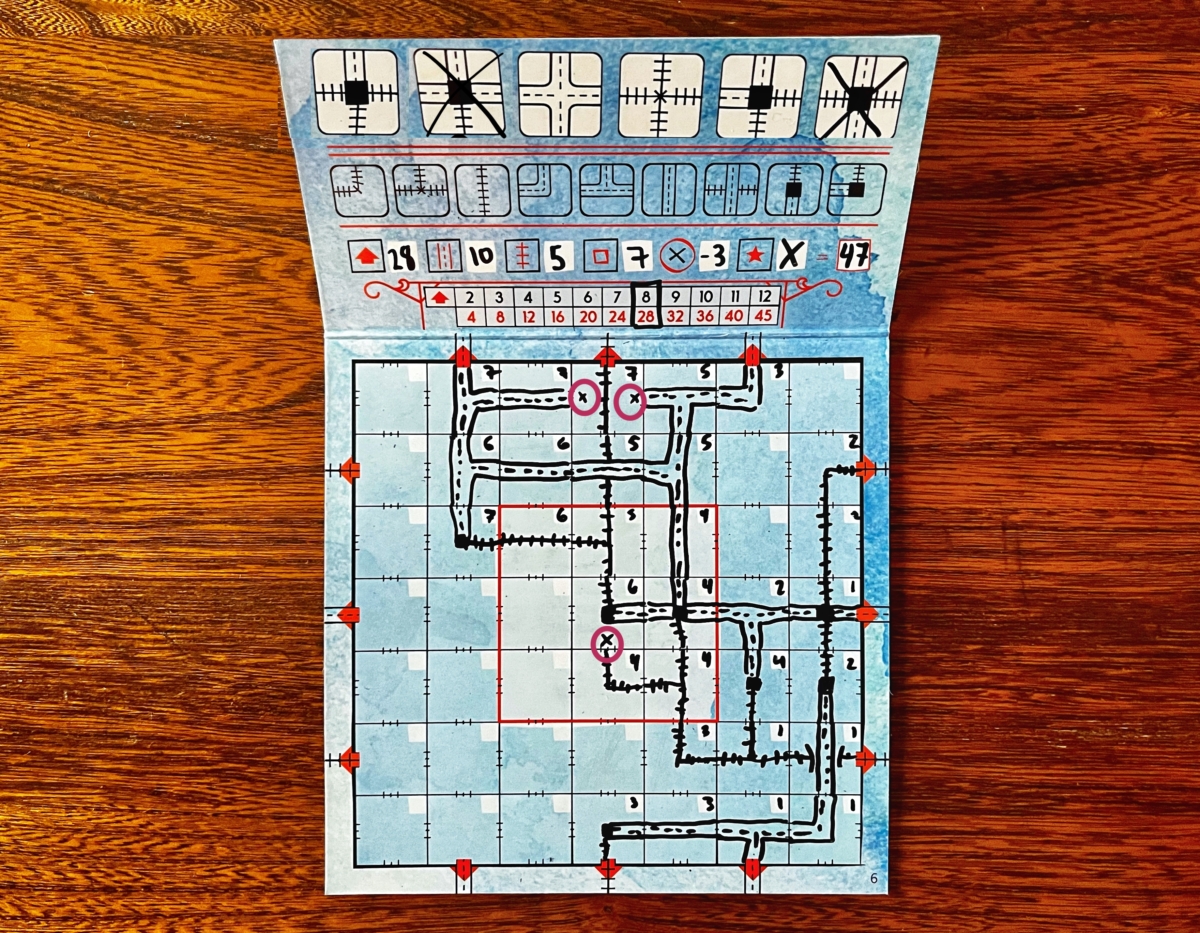
Railroad Ink Expansions
There are several expansions for Railroad Ink that come with their own dice and rules, varying from easy to difficult. Each expansion builds upon Railroad Ink’s basic gameplay rules in some way.
Both the Deep Blue Edition and the Blazing Red Edition come with 2 unique expansions that you can add to any game of Railroad Ink.
Deep Blue Edition
Along with the basic components for Railroad Ink, the Deep Blue Edition includes 4 blue expansion dice used for the River and Lake expansions.
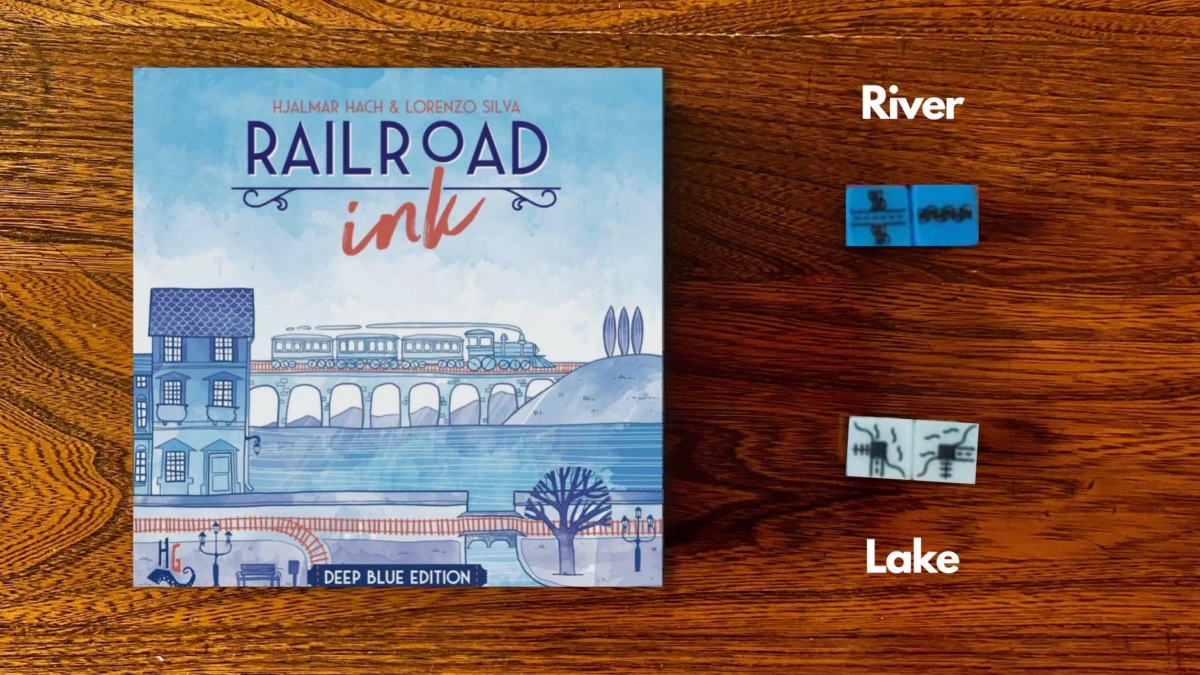
The River and Lake expansion dice.
River
This expansion introduces a third kind of Route: the river. In addition to the basic game’s goal, you’re also trying to create the longest river.
At the end of the game, you score 1 point for each space your longest river passes through. Moreover, if both ends are connected to the outer edge of the board, you get 3 additional points.
Lake
The Lake expansion introduces 2 new elements: lakes and the ability to create bigger Networks using lake piers. (Networks connected to the same lake are also considered connected to each other.)
At the end of the game, you score 1 point for each space in your smallest lake.
Blazing Red Edition
The Blazing Red Edition includes red expansion dice for the Lava and Meteor expansions (2 dice for each).
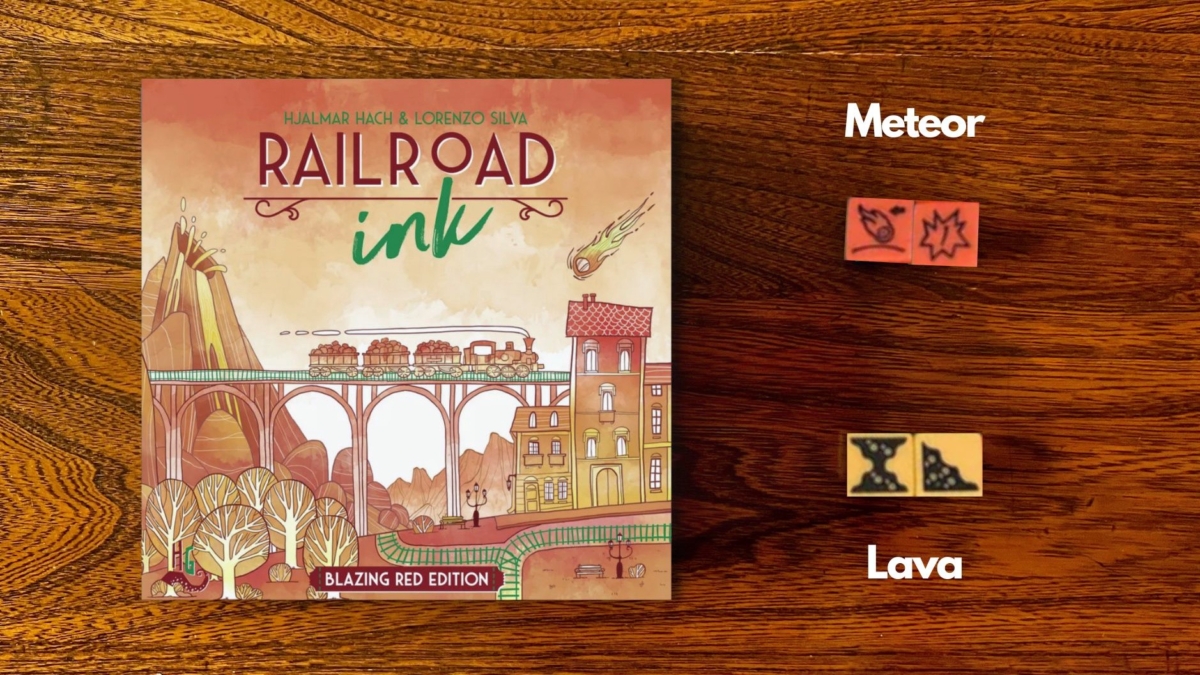
The Lava and Meteor expansion dice.
Lava
In the Lava expansion, there is a volcano at the center of your player board spewing lava each round. Your goal is to try to contain the lava and protect your Routes from destruction.
During setup, each player draws a volcano with lava in the central space of their board. Players must use at least 1 of the Lava dice rolled each round to add to their board’s lava lake.
At the end of the game, any lava lakes with open sides count as errors. Then, you’ll score 5 points for each closed lava lake and 1 point for each space in your largest lava lake.
Meteor
The Meteor expansion is all about destruction; in each round, a meteor crashes onto your player board and possibly damages a Route you’ve already drawn.
The Meteor dice rolled each round determine the direction the new meteor travels in and how many spaces away it is from the last meteor (at the beginning of the game, this is the central space).
A crater is drawn in the destination space — and if it lands on a space with a Route, that Route is erased first. You can prevent meteor damage by crossing out an available Special Route.
This, however, does count as 1 of your 3 Special Routes used.
At the end of the game, for each Route you have that connects to the edge of a crater space, you’ll score 2 points.
Railroad Ink Review
Railroad Ink is a perfect example of a simple roll-and-write game: its gameplay is quick, approachable, and smooth. Additionally, it supports a large player count and is easy to teach.
But just because Railroad Ink is a straightforward game — particularly without any expansions — doesn’t mean that it is easy.
Since the game begins so open, you’re presented with tough choices each round as you decide where to draw your Routes; as the endgame nears, these decisions will be even more agonizing.
With any roll-and-write game, you rely on the luck of the dice. However, while many dice-rolling games offer players a way to mitigate the results, Railroad Ink does not.
Some players might not enjoy this aspect, but I don’t mind it since bad dice affect all players equally.
Player Boards
I really appreciate that Railroad Ink comes with reusable dry-erase boards instead of a pad of paper sheets. Nonetheless, the boards aren’t great.
They’re quite soft, so if you press hard when you write, like me, you’ll find traces of your Routes indented on your board after you’ve erased them.
Moreover, you’ll notice a black smudgy residue left after you erase something. Going over the board area a few times with the eraser — and applying some extra pressure — does help, but only somewhat.
Deep Blue and Blazing Red Expansions
The expansions in both the Deep Blue and Blazing Red editions work well and are easy to incorporate into your Railroad Ink games, even when playing with new players.
The Lake and Lava expansions are in my top 5 favorite Railroad Ink expansions — admittedly, they play similarly to each other, so it’s no surprise I like them both.
The River expansion falls a bit lower but is still in my top 10; I really enjoy having a different style of Route to consider each round.
The Meteor expansion, however, is one of my least favorites. I don’t tend to enjoy games with elements that destroy your progress, and that’s exactly what happens each round with this expansion.
Final Thoughts
Railroad Ink is an excellent roll-and-write game. While its gameplay might seem simple, it’s an approachable game that shines and does precisely what it sets out to do.
Both the Deep Blue and Blazing Red editions are excellent versions of Railroad Ink to seek out.

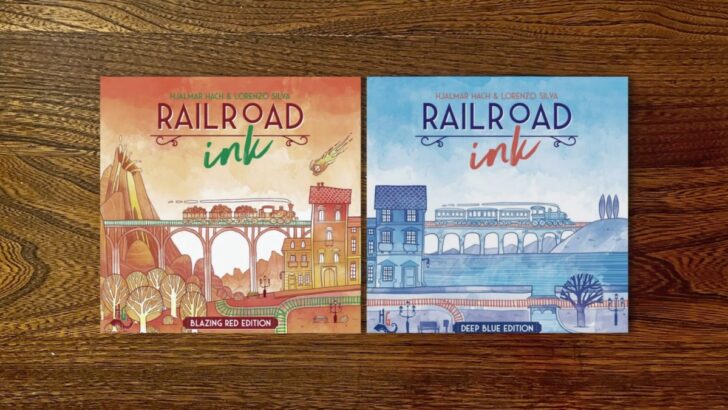
Railroad Ink Challenge Review — Lush Green and Shining Yellow Editions
Thursday 5th of January 2023
[…] off the success of Railroad Ink comes Railroad Ink Challenge, a new version of the game that keeps the original gameplay and adds a […]